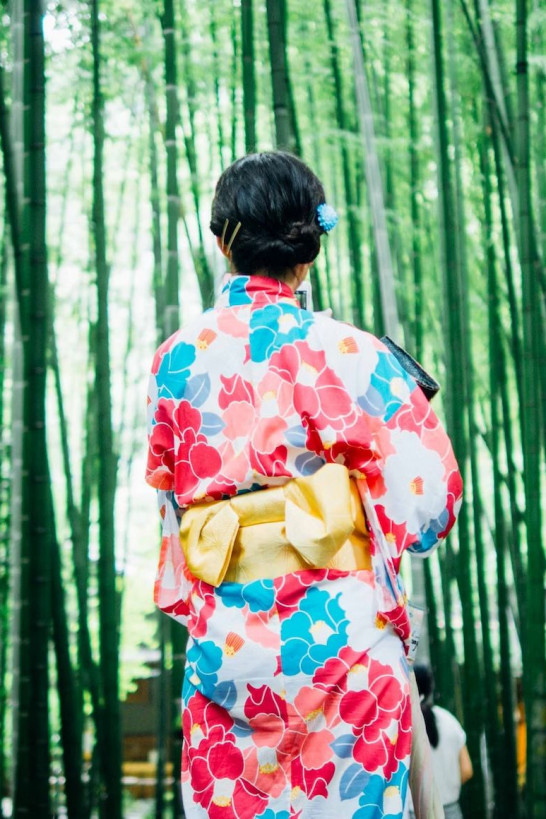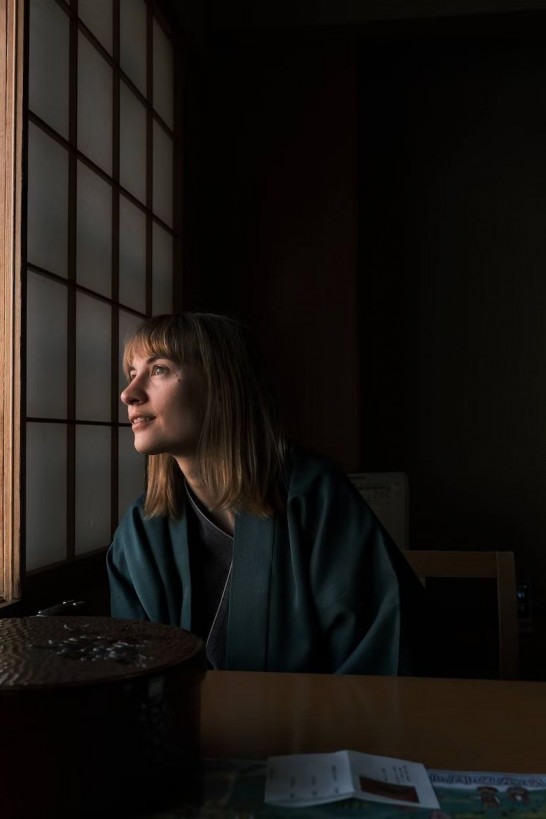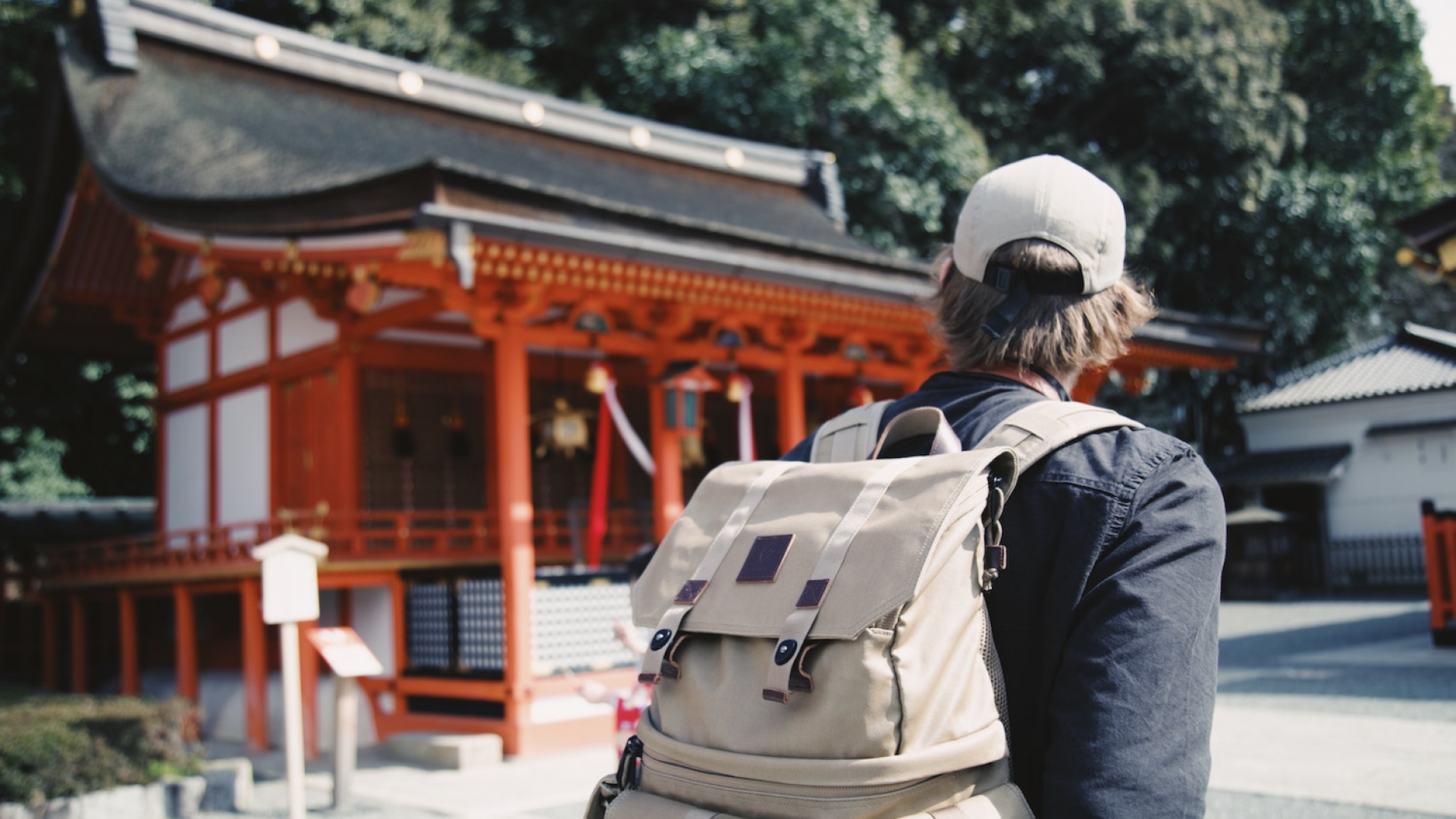
Manners at Shrines & Temples
Did you know that shrines (Shinto) and temples (Buddhist) both belong to different religions and that there are different ways to properly visit them?
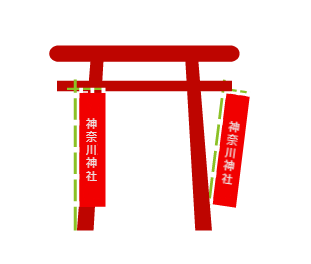
Take a small bow in front of the Torii gate
First, take a bow when you reach the Torii gate, the main entrance to a shrine. The other side of the Torii gate is considered to be a sacred space. Straighten yourself up to greet Kami, the Shinto gods.
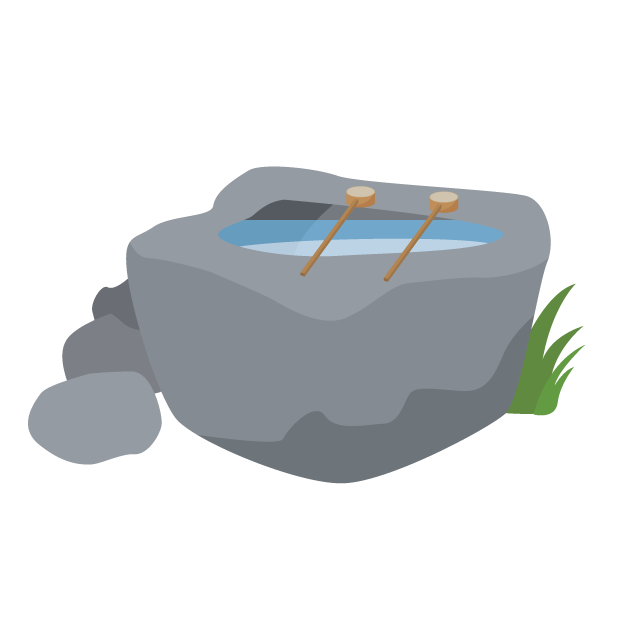
Cleanse yourself at Temizuya (washing station)
Next, stop by Temizuya to wash your hands and rinse your mouth. This is to purify your body and mind before entering the main shrine building. The steps are similar to the ones used at a Buddhist temple and they are as follows:
-
Use your right hand to scoop the water with a ladle and rinse your left hand.
-
Next, hold the ladle with your left hand to rinse your right hand.
-
Hold the ladle with your right hand and scoop some water into your cupped left hand. Put the water in your mouth and rinse your mouth without making noise (do not put the ladle directly into your mouth).
-
Hold the ladle with your right hand and rinse your left hand.
-
Lastly, to rinse the ladle, hold it upright to spill the remaining water in the cup down the handle of the ladle. Return the ladle to its original spot.
-
-
Walk down the path to the main shrine building
The main shrine building houses Kami. At Shinto shrines, the gods are thought to walk down the center of the path, so you should avoid walking in the center of the path when heading to the main shrine building.
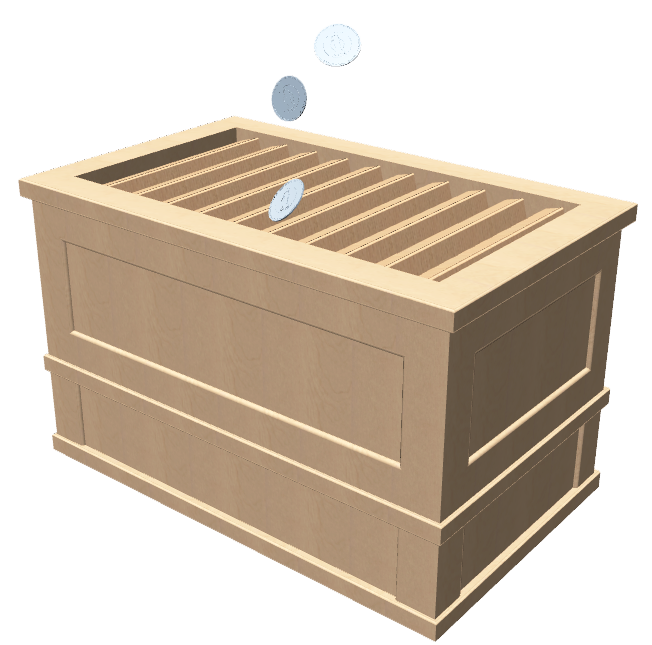
Offer Saisen (monetary offering) in front of the main shrine building
It’s finally time to worship. First, take a bow toward the main shrine building and place a monetary offering into the Saisen box. Saisen is meant to represent your gratitude to Kami. There is no rule regarding how much you should offer.
-
Ring the bell
The sound of the bell is meant to get Kami’s attention.
-
“2 bows, 2 claps, 1 bow”
Take a deep bow two times (to show respect to Kami).
Put your hands together in front of your chest, slightly lower your right hand, clap your hands twice and pray. When you finish praying, lower your hands, take a bow one more time, and leave the premises.

Take a bow at the Torii gate
Once you go through the Torii gate, turn back toward the main shrine building, and take one last bow.
This is how you visit a shrine properly.
* “2 bows, 2 claps, 1 bow” is the most typical practice, however, some shrines may have unique customs.
Did you know that shrines (Shinto) and temples (Buddhist) both belong to different religions and that there are different ways to properly visit them?
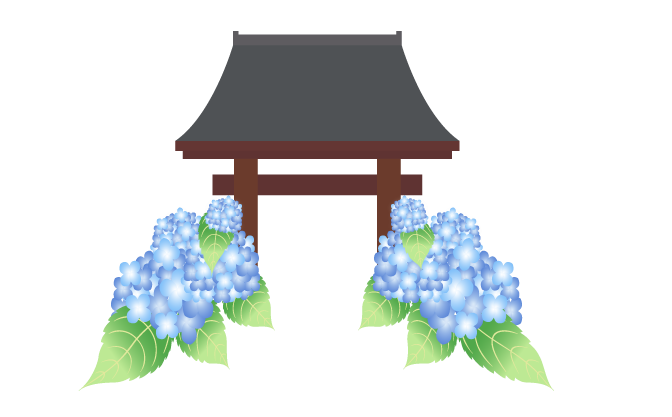
Take a bow in front of the Sanmon gate
First, take a bow in front of the Sanmon gate, the entrance to Buddhist temples. Enter the gate with a sense of respect for Buddha and do not step on the wooden threshold. Sanmon, like the Torii gate at a Shinto shrine, marks the boundary between our world and the sacred area. Remove your hat and other headgear.

Cleanse yourself at Temizuya (washing station)
Next, stop by Temizuya to wash your hands and rinse your mouth. This is to purify your body and mind before entering the main temple building. The steps are similar to the ones used at a Shinto shrine and they are as follows:
※ Many temples do not have Temizuya. If this is the case, proceed without completing this ritual.-
Use your right hand to scoop the water with a ladle and rinse your left hand.
-
Next, hold the ladle with your left hand to rinse your right hand.
-
Hold the ladle with your right hand and scoop some water into your cupped left hand. Put the water in your mouth and rinse your mouth without making noise (do not put the ladle directly into your mouth).
-
Hold the ladle with your right hand and rinse your left hand.
-
Lastly, to rinse the ladle, hold it upright to spill the remaining water in the cup down the handle of the ladle. Return the ladle to its original spot.
-
-
Light incense sticks and candles
If possible, light a candle and incense sticks prior to worship. This represents burning away the impurities and cleansing the surroundings to be lead in the right direction by Buddha. Do not use the candles or incense of other visitors to light your own. Instead, use your own lighter or the candle offered by the temple. Using other visitors’ flame signifies receiving bad luck and their sins from them. ※ To prevent accidental fires, some temples do not allow visitors to light candles and incense sticks. Check before you visit.
-
Walk down the path to the main temple building
The main temple building houses the principal object of worship.

Offer Saisen (monetary offering) in front of the main temple building
It’s finally time to worship. First, take a bow toward the main temple building and place a monetary offering into the Saisen box. Saisen is meant to represent your gratitude to Buddha and the act of warding off bad spirits. There is no rule regarding how much you should offer.
-
Ring the gong, put your hands together, and bow
Subsequently, if Waniguchi (a gong hanging from the ceiling) is available, ring it. Don’t be forceful as this act represents your greeting to Buddha.
Next, put your hands together. Straighten your back, close your eyes, put your hands together in front of your chest, and take a deep bow. In contrast to the ritual at Shinto shrines, you do not clap your hands here.
When you finish praying, take a bow one more time, and leave the premises.

Take a bow at Sanmon
Once you go through the Sanmon gate, turn back toward the main temple building, and take one last bow.
This is how you visit a temple properly.
※ Elements of this ritual may vary by sect.
Things to remember when visiting
Both shrines and temples are considered sacred. Therefore, you should avoid wearing outfits that are too revealing. Additionally, be sure to look out for and respect the “no photography” or “no entry” areas.
Learn proper etiquettes and use your knowledge during your trip!
